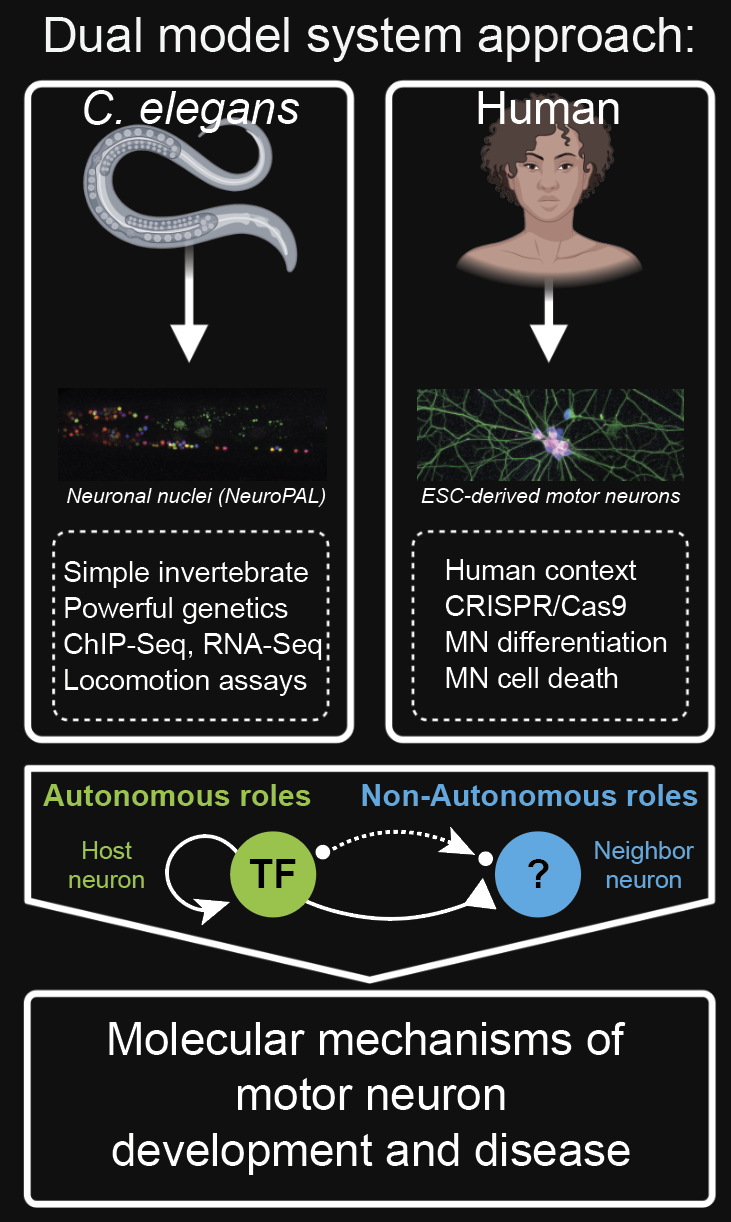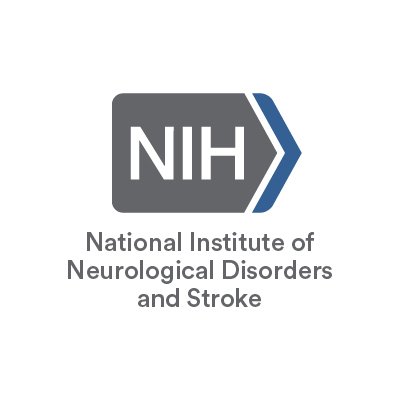research

Summary:
Our research aims to address a fundamental question in the field of developmental neurobiology: How do neurons establish unique terminal identities during development and remain functional over time?
By leveraging the strengths of two model systems, C. elegans and human embryonic stem cells (hESCs), we aim to uncover conserved molecular mechanisms driving motor neuron (MN) terminal differentiation and maintenance.
MNs are an ancient cell type targeted by many diseases. As such, deep insight into these mechanisms could provide novel avenues into the pathogenesis of neurological disorders (e.g., SMA and ALS), as well as enhance in vitro protocols for MN disease modeling and drug screening.
From the basic science perspective, our research program will provide a lens into transcriptional programs that cell-autonomously or non-cell-autonomously govern the final stages of MN development using a comparative platform to uncover conserved and divergent principles of nervous system development.
Context:
You are born with the nervous system you will die with. That is, while you replace your epidermis every month, your liver every 2 years, and your bones every decade, nearly all of the neurons you have now were generated in utero and must survive as long as you do. But how do neurons overcome this unique challenge?
Whereas extensive research has provided fundamental insights into the early processes of nervous system development, our understanding of the final stages of neuronal development, including their persistence across decades, is still very limited. Our lab seeks to address this gap.
A consistent theme from work over the last two decades is that the terminally differentiated states of neurons (i.e., their ‘final stages’) are determined by a class of transcription factors (TFs) called terminal selectors. The defining features of terminal selectors are that they:
(1) activate batteries of effector genes called terminal identity genes, which encode proteins essential for neuron type-specific functions
(2) are required to establish during development and maintain throughout life the identity of individual neuron types.
To date, dozens of terminal selectors have been described across species including planaria, cnidaria, worms, flies, zebrafish, and mice. Importantly, human genetic studies strongly suggest a causal role for orthologs of terminal selector (e.g., EBF3, OTX2, FEV, NURR1) in neurodevelopmental and neurodegenerative disorders, highlighting the clinical need for deep mechanistic studies into their functions.
FUNDING


